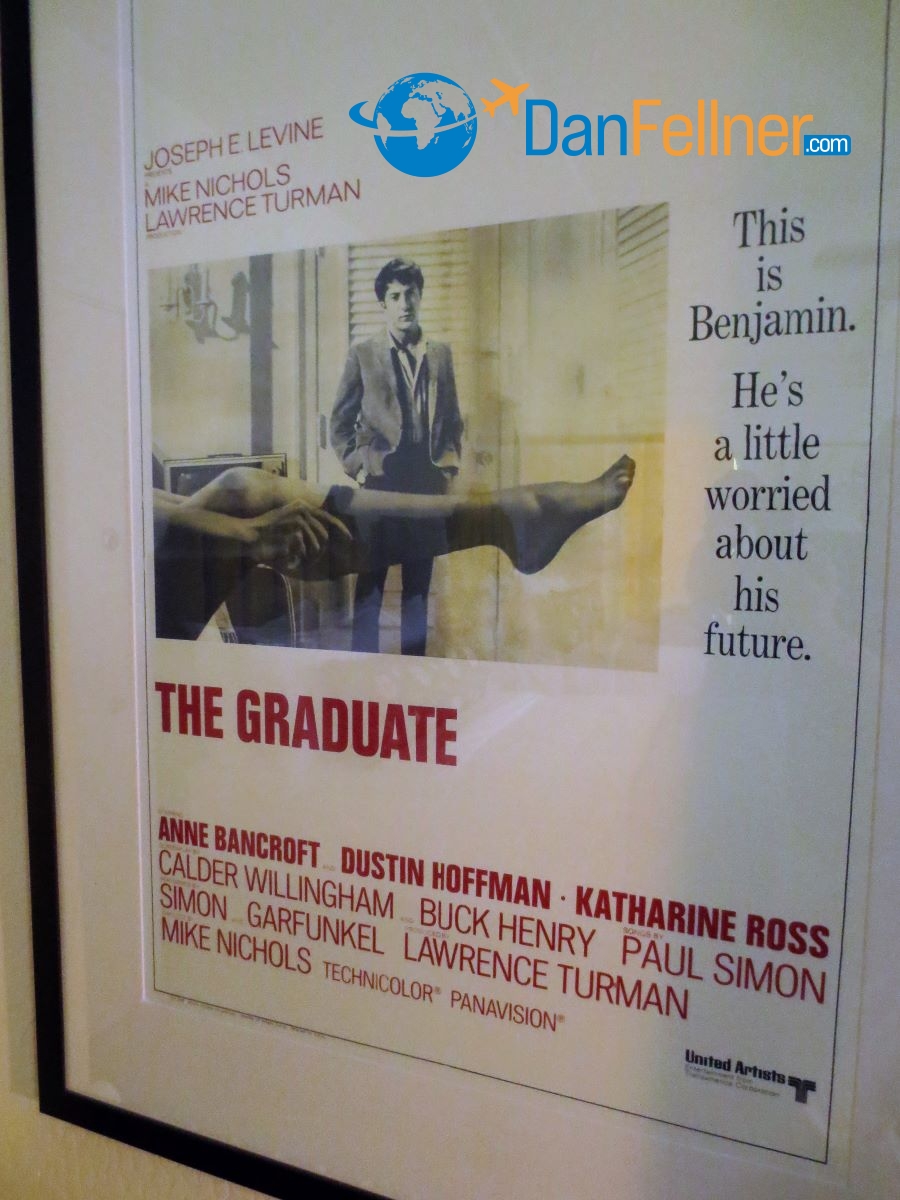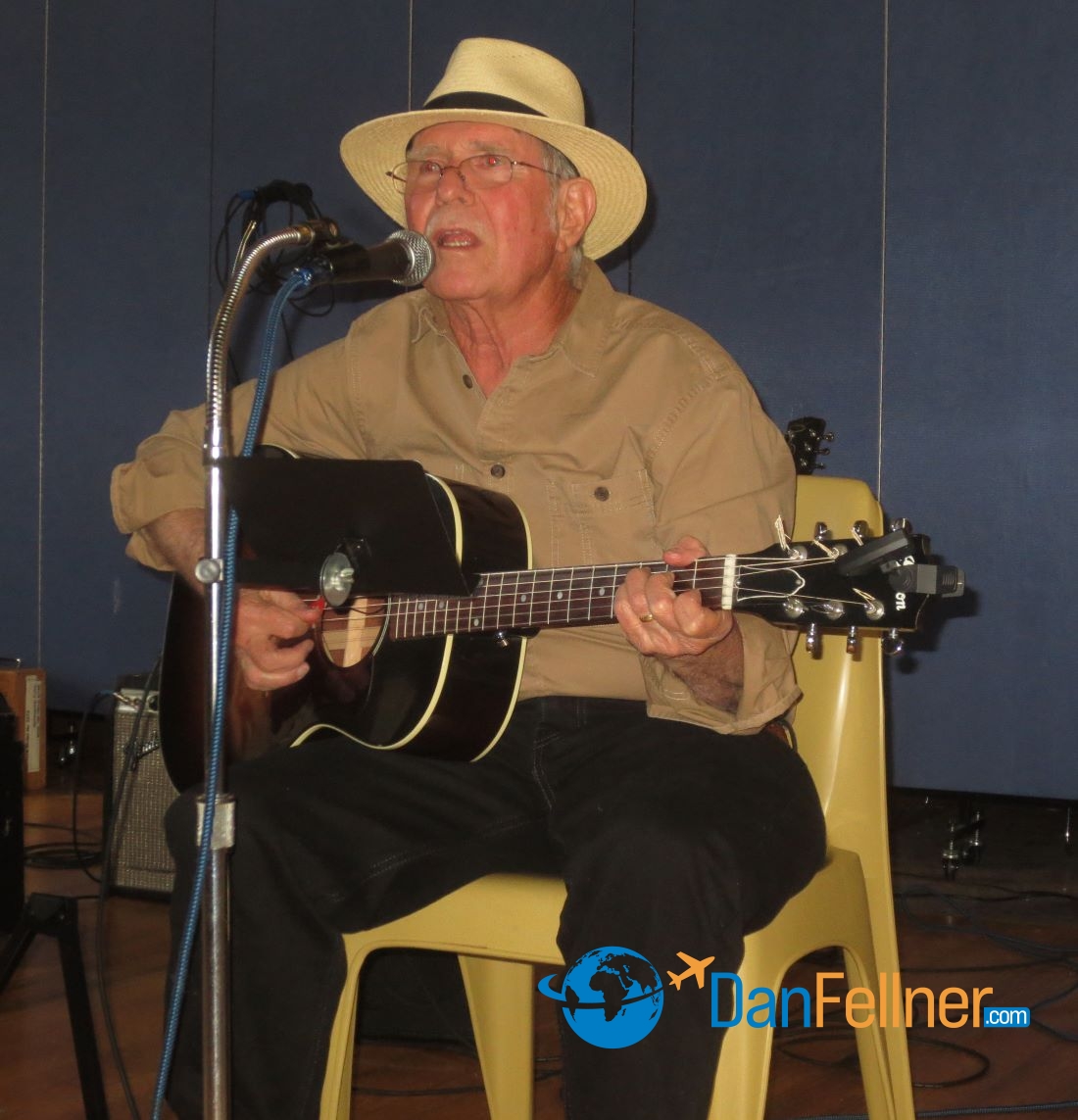Fifty-year anniversary of groundbreaking movie presents sightseeing opportunities for the film’s fanatics
The Arizona Republic — October 22, 2017
BERKELEY, Calif. – Here’s to you, Mrs. Robinson.
December marks the 50-year anniversary of the release of “The Graduate,” named the seventh best American movie of all time by the American Film Institute. The film, which won an Oscar for director Mike Nichols, defined the zeitgeist of a generation starting to rebel against convention and pre-ordained life paths.

View of downtown Berkeley from the Graduate Hotel.
The spirit of the groundbreaking movie, immortalized by Anne Bancroft as Mrs. Robinson seducing an angst-filled Dustin Hoffman, still survives in this free-thinking college town in which parts of the movie were filmed.
To mark the anniversary, the Berkeley Historical Society is offering a walking tour Nov. 11 to see the sites shown in the film, many of which are still in use. Steve Finacom, a past president of the society, will guide the tour. He said interest is strong and more tours might be added.
“I think people are interested in seeing places from history — even fictional history,” Finacom said. “The ‘60s has a hold on the imagination. Berkeley did really capture the attention of the nation in that era.”

“The Graduate” movie posters hang in each of the 144 rooms at the Graduate Hotel Berkeley.
I recently spent a long weekend in Berkeley on my own self-guided tour into cinematic history. I was too young to see the movie when it first came out, but I’ve seen it numerous times as an adult. “The Graduate” spoke to me on so many levels.
I also wanted to learn more about Berkeley, a city of about 120,000 people just north of Oakland and across the bay from San Francisco. It’s known as a boisterous epicenter of left-wing political activism.
Appropriately, I stayed at The Graduate Hotel, which made a brief appearance in the movie and is one block from the University of California-Berkeley campus. Hoffman’s character, Benjamin Braddock, pursued Elaine — a Cal-Berkeley student and Mrs. Robinson’s daughter — in hopes of winning Elaine’s heart.

The Graduate Hotel features bong-shaped lamps in its guestrooms.
But the hotel’s name has nothing to do with the movie. Known as the Hotel Durant when the movie was filmed, it became The Graduate last summer when it was acquired by a company that owns a chain of 10 hotels in university communities around the country. (The Graduate Tempe is on Apache Boulevard across the street from Arizona State University’s campus.)
Nevertheless, the hotel has capitalized on its name, hanging “The Graduate” movie posters in each of its 144 rooms and offering occasional “vinyl nights” in the hotel bar, in which the movie’s famous soundtrack — recorded by Simon and Garfunkel — spins on an old turntable. Berkeley’s quirky counterculture is represented by bong-shaped lamps in the guestrooms and a restroom urinal painted with the logo and colors of Stanford, Cal-Berkeley’s arch-rival.

A urinal in the lobby restroom at the Graduate Hotel in Berkeley, featuring the emblem of Stanford University, Cal-Berkeley’s arch-rival.
As I took a short walk from the hotel to Telegraph Avenue to explore the filming sites, I passed the types of shops one might expect to see in Berkeley — a Buddhist bookstore, a restaurant selling “America’s first USDA certified organic fast food” and tie-dyed shirt stalls. A man known simply as “The Wizard” gazed into a crystal ball while predicting the futures of passersby on a busy street corner.
My first stop was a stately Victorian house built in 1895 at the corner of Channing Way and Dana Street that served as Ben’s boarding house in the film. This is where a crotchety landlord played by Norman Fell (who later starred as Mr. Roper on TV’s “Three’s Company”) accused Ben of being an “outside agitator” before evicting him.

The Victorian boarding house in which Dustin Hoffman’s character rented a room while pursuing Elaine.
Today, the building is divided into six apartments. Finacom is petitioning the city to have the building designated as a historic landmark, noting that it’s “already an informal landmark; it should be an official one.”
Two blocks away, I stopped at the now-closed Caffe Mediterraneum, where Ben sipped a beer while surreptitiously watching Elaine emerge across Telegraph Avenue from Moe’s Books, a Berkeley staple known for its eclectic selection of used books and posters.

Moe’s Books, shown in “The Graduate,” has been a popular downtown Berkeley store since 1959.
Moe Moscowitz, who founded the store in 1959, passed away 20 years ago. His daughter Doris Moscowitz runs the business and proudly displays a large photo of the storefront seen in “The Graduate.” She said it’s a point of pride that Moe’s Books appeared in such a landmark movie, adding that Nichols did a wonderful job of capturing “Berkeley’s iconic funkiness.”
Just down the block from my hotel I found the Theta Delta Chi Fraternity house, where Ben frantically parked his red Alfa Romeo Spider convertible and rushed inside to find out where Elaine was getting married. It’s still an active frat house but no one answered the door when I repeatedly knocked on a Saturday morning.

The Theta Delta Chi Fraternity house, used in the filming of “The Graduate,” is still an active frat house.
Cal-Berkeley’s Sproul Plaza, the main square on campus, also was shown in “The Graduate,” although parts of the movie were also filmed at USC and UCLA in Los Angeles.
Today, Cal-Berkeley remains a hotbed of student activism. Free campus walking tours are offered every morning at 10:00, leaving from the football stadium. Indeed, the tour I took was briefly interrupted by a passing march for women’s rights.

Sather Tower, located on the UC-Berkeley campus, is the third-tallest bell-and-clock tower in the world.
There aren’t a lot of typical tourist attractions in Berkeley. Perhaps the most noteworthy landmark is Sather Tower, located at the center of campus. At 307 feet, it’s the third-tallest bell-and-clock-tower in the world. For $3, you can take an elevator to the top, where there is a 61-bell carillon, not to mention stunning views of downtown San Francisco.
But visitors typically don’t come to Berkeley for the sites. They come to experience the vibe.
A sample of the city’s energy and rich musical history is now on display at the Historical Society, which recently opened an exhibit – which runs through April — called “Soundtrack to the 60s: The Berkeley Music Scene.”

The legendary Country Joe McDonald performs at the Berkeley Historical Society.
My visit happened to coincide with the exhibit’s opening, featuring a performance by the legendary Country Joe McDonald, a Berkeley fixture who has lived here since before “The Graduate” was made. As the lead singer of Country Joe and the Fish, McDonald, now 75, wrote and recorded one of the most famous anti-Vietnam War anthems of the ‘60s (see video shot by the author: Country Joe McDonald performs anti-Vietnam War song).
Like a 50-year-old suede vest with bright psychedelic trim, Berkeley is a bit frayed at the edges. The city has a serious homeless problem. But Berkeley’s charm, vibrant spirit and retro-feel more than compensate for some of its dinginess.
Just like Ben experienced with Mrs. Robinson 50 years ago, once you get past the brazen exterior, you’ll likely be seduced into wanting more.

© 2017 Dan Fellner



